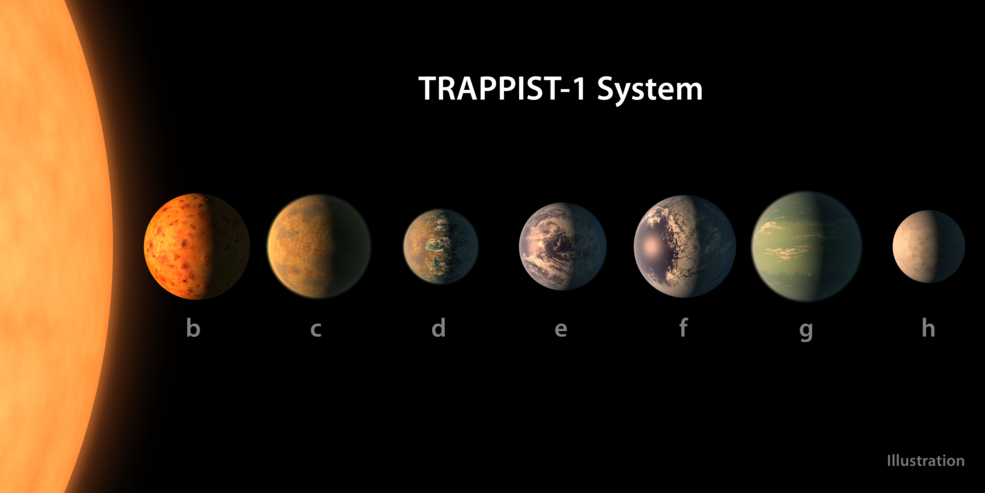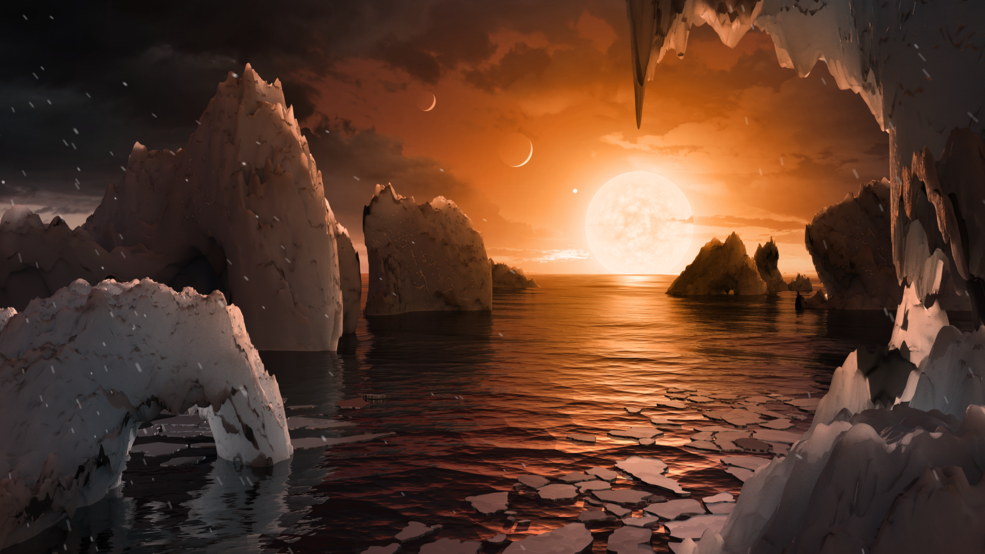For the endless infinity that surrounds us, one has to be a hard core pessimist to think that whatever exists on Earth is the only life form there is. However, there’s good news for optimists as NASA’s Spitzer Space Telescope has revealed the first known system of seven Earth-size planets around a single star. Three of these planets are positively located in a habitable zone, which is around the parent star TRAPPIST-1, where a rocky planet is most likely to have liquid water. Located at about 40 light-years (235 trillion miles) from Earth, the system of planets is relatively close to us, in the constellation Aquarius. And because they are located outside of our solar system, these planets are scientifically known as exoplanets.

The discovery sets a new record for greatest number of habitable-zone planets found around a single star outside our solar system. All of these seven planets could have liquid water – key to life as we know it – under the right atmospheric conditions, but the chances are highest with the three in the habitable zone.
In contrast to our sun, the TRAPPIST-1 star is so cool that liquid water could survive on planets orbiting very close to it. All seven of the TRAPPIST-1 planetary orbits are closer to their host star than Mercury is to our sun. If a person was standing on one of the planet’s surface, they could gaze up and potentially see geological features or clouds of neighboring worlds, which would sometimes appear larger than the moon in Earth’s sky. The planets may also be tidally locked to their star, which means the same side of the planet is always facing the star, therefore each side is either perpetual day or night. This could mean they have weather patterns totally unlike those on Earth, such as strong winds blowing from the day side to the night side, and extreme temperature changes.

This exoplanet system is called TRAPPIST-1, named after The Transiting Planets and Planetesimals Small Telescope (TRAPPIST) in Chile. In May last year, researchers using TRAPPIST announced they had discovered three planets in the system. Assisted by several ground-based telescopes, including the European Southern Observatory’s Very Large Telescope, Spitzer confirmed the existence of two of these planets and discovered five additional ones, increasing the number of known planets in the system to seven. Using Spitzer data, the team precisely measured the sizes of the seven planets and developed first estimates of the masses of six of them, allowing their density to be estimated.
Based on their densities, all of the TRAPPIST-1 planets are likely to be rocky. Further observations will not only help determine whether they are rich in water, but also possibly reveal whether any could have liquid water on their surfaces. The mass of the seventh and farthest exoplanet has not yet been estimated – scientists believe it could be an icy, “snowball-like” world, but further observations are needed. NASA’s telescopes Spitzer, Hubble, and Kepler will help astronomers plan for follow-up studies using NASA’s upcoming James Webb Space Telescope, launching in 2018. With much greater sensitivity, Webb will be able to detect the chemical fingerprints of water, methane, oxygen, ozone, and other components of a planet’s atmosphere. Webb also will analyze planets’ temperatures and surface pressures – key factors in assessing their habitability.
Calling it a remarkable step forward towards the goal of answering that all important question of, Are we alone?, Thomas Zurbuchen, associate administrator of the agency’s Science Mission Directorate in Washington said, “This discovery could be a significant piece in the puzzle of finding habitable environments, places that are conducive to life.”
With inputs from NASA



